| Availability: | |
|---|---|
| Quantity: | |
| PDF Export | |
Product introduction:
Grinding pebbles work by being placed inside a ball mill, which grinds materials into small particles. The balls are made from the high-quality silica mineral that is very durable and resistant to wear. As the mill rotates, the grinding pebbles are pushed around and tumble against the materials being ground. This friction and impact between the pebbles and materials help to break down the particles in a uniform and efficient manner.
The working principle of grinding pebbles in a ball mill is based on the principles of grinding and attrition. These pebbles are able to reduce the size of materials by colliding with them, causing them to break down into smaller particles. This grinding process is used in many different industries, including mining, ceramics, and pharmaceuticals.
Silica grinding pebbles are known for their high grinding efficiency, low contamination, and long service life. They can be used in both wet and dry grinding applications and are ideal for processing materials that are sensitive to contamination, such as food and pharmaceuticals. Additionally, the uniformity of the particle size distribution produced by silicone balls makes them ideal for use in high-end applications that require precise particle sizing.
Overall, the use of silica grinding pebbles in ball milling is an effective and efficient method of grinding materials. With their durable and resistant properties, they offer a reliable and long-lasting solution for a wide range of industrial applications.

Production process:
How do we produce the silex pebbles?
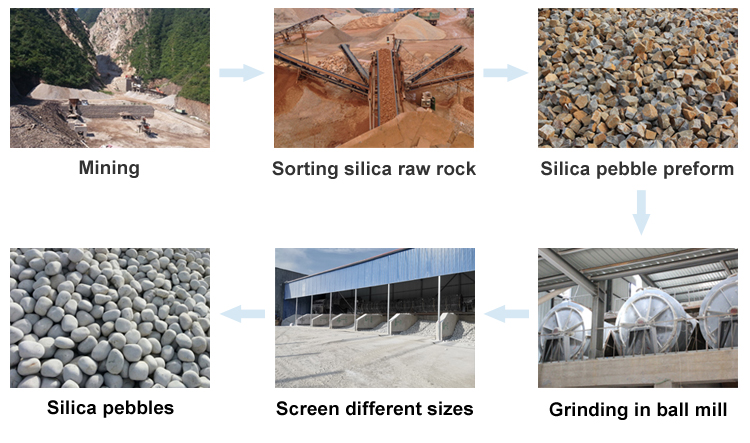
Gaoteng has engaged in the production of silex pebbles for over 23 years. Our silex pebbles are from the mine, not from the sea or river.
First, the artisans mine the silicon mineral from the mountain. Then sort the silica raw rock and break the large rock into smaller ones, so that the preformed silex pebbles are finished. Next, put the preformed silica pebbles into a ball mill, after grinding for 6~8 hours, the rocks become round. After that, we screen the different sizes by machine and by hand. Finally, we pack the silica pebbles into bags and transport them to our warehouse or direct to the customers.
Technical indicator:
Chemical composition:
SiO2 ≥99.31%
Al2O3 ≤0.36%
Fe2O3 ≤0.018%
CaO: 0.09%
MgO: 0.04%
Physical property:
Volume density ≥2.66g/cm3
Hardness: Around 8 mohs
Porosity ≤0.38%
Actual abrasion rate ≤1.35
Color: Grey and White
Size: 1-3cm,2-4cm,3-5cm,5-7cm,4-6cm,6-8cm,8-10cm,10-12cm,12-15cm
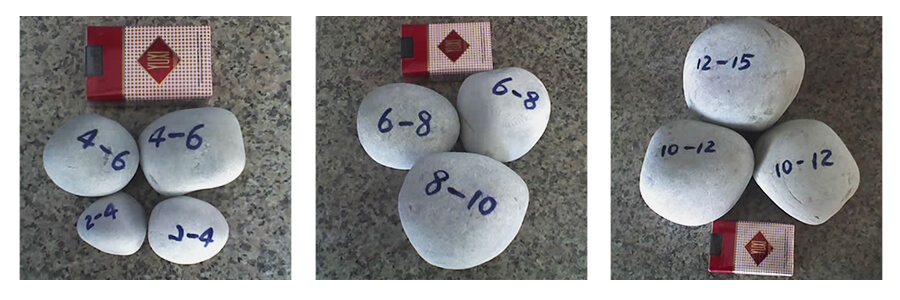
Product features:
Grinding pebbles are widely used as grinding media in various industries such as ceramic, paint, and chemical industries. These pebbles are highly preferred over other forms of grinding media due to their unique properties.
Firstly, grinding pebbles are very hard and durable, which allows them to withstand heavy wear and tear during the grinding process. They are made of pure, natural silica, which makes them extremely resistant to chemical and physical breakdowns. This means that grinding pebbles can be used for an extended period without the need for frequent replacements.
Secondly, grinding pebbles have a low abrasion rate, which prevents them from contaminating the products being ground. They are also non-reactive and do not introduce foreign material to the product being ground, making them ideal for producing high-quality, pure materials.
Lastly, grinding pebbles have a low density compared with steel balls, which means that they can be used in large quantities to achieve optimal grinding results without adding too much weight to the grinding equipment. This makes grinding pebbles an ideal choice for large-scale grinding operations.
In conclusion, grinding pebbles are a highly preferred grinding media due to their durability, low abrasion rate, non-reactive nature, and low density. They are a reliable and cost-effective option for various industries that require precision grinding.
Comparison report:

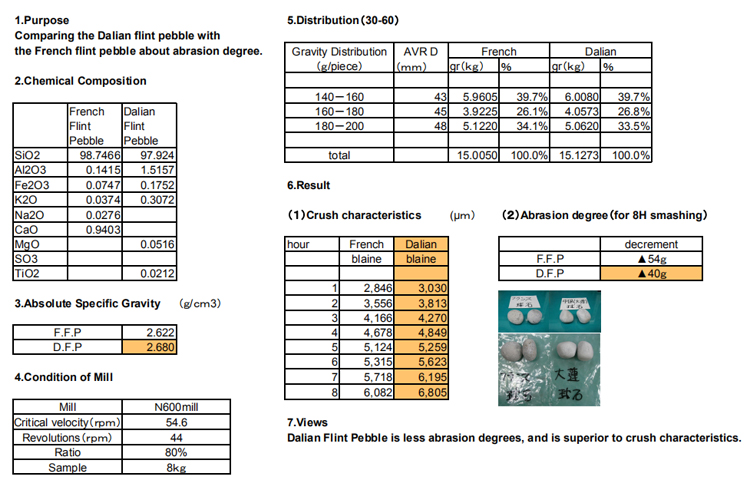
Under the same test condition, test report from our Japanese customer show the difference from our Dalian pebbles & French pebbles:
Density: 2.68g/cm3 of Dalian pebbles higher than 2.62g/cm3 of french pebbles.
Wear loss: wear loss of Dalian pebbles is 40g, less than 50g of french pebbles.
Our advantages and services:
Dalian Gaoteng was established in 2000, has rich export experience, cooperate with over 200 customers, often export to Japan, Southeast Asia, Europe, the middle east…
Due to customers from different industries could have different requirement, we can help you to choose suitable product.
Besides, we have own logistics company, can offer the best service and favorable price to you.
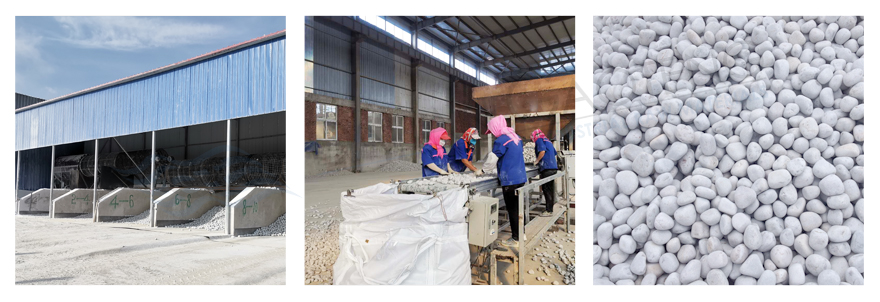
Packing details:


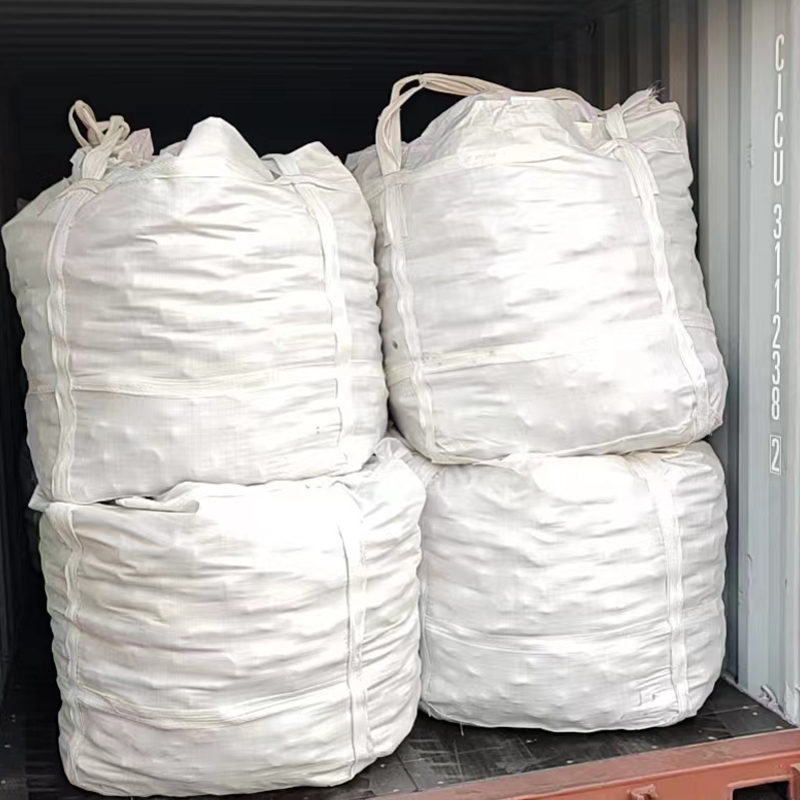
Jumbo Bags

One Bag With One Pallet

Two Bags With Pallet

In Bulk
Factory:
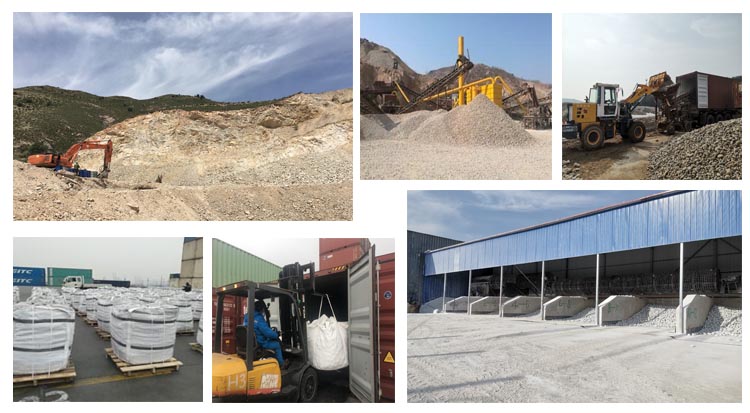
Product introduction:
Grinding pebbles work by being placed inside a ball mill, which grinds materials into small particles. The balls are made from the high-quality silica mineral that is very durable and resistant to wear. As the mill rotates, the grinding pebbles are pushed around and tumble against the materials being ground. This friction and impact between the pebbles and materials help to break down the particles in a uniform and efficient manner.
The working principle of grinding pebbles in a ball mill is based on the principles of grinding and attrition. These pebbles are able to reduce the size of materials by colliding with them, causing them to break down into smaller particles. This grinding process is used in many different industries, including mining, ceramics, and pharmaceuticals.
Silica grinding pebbles are known for their high grinding efficiency, low contamination, and long service life. They can be used in both wet and dry grinding applications and are ideal for processing materials that are sensitive to contamination, such as food and pharmaceuticals. Additionally, the uniformity of the particle size distribution produced by silicone balls makes them ideal for use in high-end applications that require precise particle sizing.
Overall, the use of silica grinding pebbles in ball milling is an effective and efficient method of grinding materials. With their durable and resistant properties, they offer a reliable and long-lasting solution for a wide range of industrial applications.

Production process:
How do we produce the silex pebbles?

Gaoteng has engaged in the production of silex pebbles for over 23 years. Our silex pebbles are from the mine, not from the sea or river.
First, the artisans mine the silicon mineral from the mountain. Then sort the silica raw rock and break the large rock into smaller ones, so that the preformed silex pebbles are finished. Next, put the preformed silica pebbles into a ball mill, after grinding for 6~8 hours, the rocks become round. After that, we screen the different sizes by machine and by hand. Finally, we pack the silica pebbles into bags and transport them to our warehouse or direct to the customers.
Technical indicator:
Chemical composition:
SiO2 ≥99.31%
Al2O3 ≤0.36%
Fe2O3 ≤0.018%
CaO: 0.09%
MgO: 0.04%
Physical property:
Volume density ≥2.66g/cm3
Hardness: Around 8 mohs
Porosity ≤0.38%
Actual abrasion rate ≤1.35
Color: Grey and White
Size: 1-3cm,2-4cm,3-5cm,5-7cm,4-6cm,6-8cm,8-10cm,10-12cm,12-15cm

Product features:
Grinding pebbles are widely used as grinding media in various industries such as ceramic, paint, and chemical industries. These pebbles are highly preferred over other forms of grinding media due to their unique properties.
Firstly, grinding pebbles are very hard and durable, which allows them to withstand heavy wear and tear during the grinding process. They are made of pure, natural silica, which makes them extremely resistant to chemical and physical breakdowns. This means that grinding pebbles can be used for an extended period without the need for frequent replacements.
Secondly, grinding pebbles have a low abrasion rate, which prevents them from contaminating the products being ground. They are also non-reactive and do not introduce foreign material to the product being ground, making them ideal for producing high-quality, pure materials.
Lastly, grinding pebbles have a low density compared with steel balls, which means that they can be used in large quantities to achieve optimal grinding results without adding too much weight to the grinding equipment. This makes grinding pebbles an ideal choice for large-scale grinding operations.
In conclusion, grinding pebbles are a highly preferred grinding media due to their durability, low abrasion rate, non-reactive nature, and low density. They are a reliable and cost-effective option for various industries that require precision grinding.
Comparison report:


Under the same test condition, test report from our Japanese customer show the difference from our Dalian pebbles & French pebbles:
Density: 2.68g/cm3 of Dalian pebbles higher than 2.62g/cm3 of french pebbles.
Wear loss: wear loss of Dalian pebbles is 40g, less than 50g of french pebbles.
Our advantages and services:
Dalian Gaoteng was established in 2000, has rich export experience, cooperate with over 200 customers, often export to Japan, Southeast Asia, Europe, the middle east…
Due to customers from different industries could have different requirement, we can help you to choose suitable product.
Besides, we have own logistics company, can offer the best service and favorable price to you.

Packing details:



Jumbo Bags

One Bag With One Pallet

Two Bags With Pallet

In Bulk
Factory:

With the development of business, Gaoteng has gradually become the global procurement center of customers, global sourcing & one-stop shipping service can be provided, we are finding more possibilities for future development, create more value to be a reliable partner and friend of you